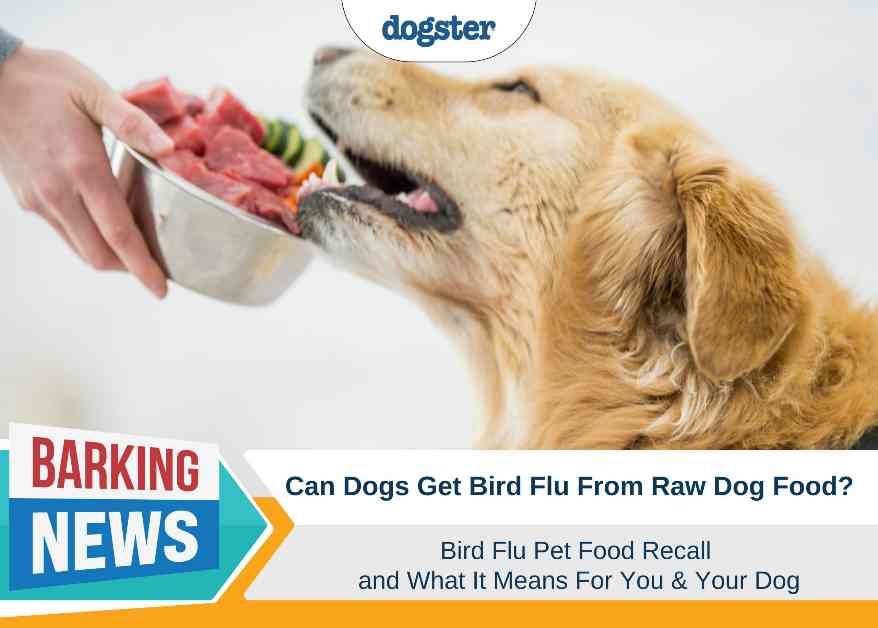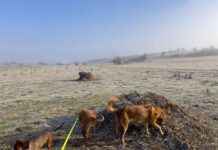Understanding the Bird Flu Pet Food Recall: Implications for You and Your Dog
In the ever-churning sea of news stories, it can be a challenge to discern which headlines truly merit our attention. Will a dingo indeed devour your baby? Did that offhand Gulf renaming trigger a full-blown blizzard? And now, the pressing question on many pet owners’ minds: could your beloved furry friend contract bird flu from their meal?
We’ll steer clear of dingoes and name-related weather phenomena, but let’s delve into the bird flu outbreak, its ramifications for our pets, and the recent recalls of raw pet foods that have rattled the industry.
The Facts About Bird Flu
Bird flu, officially known as avian influenza or H5N1, stands as a formidable strain of the influenza virus that wreaks havoc in avian populations and sends shockwaves through the poultry industry. This highly pathogenic virus historically spread from bird to bird, occasionally leaping to mammals like cattle. However, the latest outbreak paints a more alarming picture, with mammal-to-mammal transmission hinting at the virus’s evolution and adaptability, potentially leading to dire consequences.
Birds infected with H5N1 face dismal odds of recovery, plunging wild bird populations into turmoil and necessitating mass culling in poultry farms to contain the virus’s spread. While cattle generally exhibit mild symptoms like fever and lethargy when infected, humans can contract bird flu through direct contact with infected birds or mammals, experiencing flu-like symptoms such as fever, headache, coughing, and, at times, gastrointestinal distress. In the US, fewer than 70 confirmed human cases have emerged since the 2024 outbreak’s onset, with one reported fatality from H5N1, placing it relatively low on the spectrum of life-threatening diseases.
The prevailing concern among pet owners stems from the voluntary recall of cat food by several manufacturers following the demise of a cat that consumed raw frozen cat food contaminated with the H5N1 virus.
Cats, Dogs, and Bird Flu
Past evidence has shown that felines can fall prey to avian influenza, particularly farm cats or strays enticed by wild birds or unpasteurized milk. Regrettably, bird flu spells doom for cats, unleashing symptoms like fever, lethargy, inflamed eyes, respiratory distress, and neurological abnormalities such as tremors and seizures.
The recent death of an indoor cat in Washington County has sparked widespread testing by pet food producers, prompting recalls of certain poultry-based products. While advocates of raw pet food argue minimal risk, this incident underscores a glaring issue with the raw diet trend: pathogen exposure.
Though raw diets boast health benefits for pets, the looming threat of bacterial and viral contamination looms large, a hazard that can be mitigated through gentle cooking. Several fresh-frozen companies have pivoted to a safer alternative involving light cooking, steering clear of the ultraprocessing rampant in mainstream pet foods.
While symptomatic bird flu cases in dogs remain absent thus far, subclinical instances have surfaced. Dogs in Thailand exposed to H5N1 showed positive antibodies, with those experimentally infected shedding the virus without displaying clinical symptoms.
How Can I Protect My Dog from Bird Flu?
Before you hit the panic button, rest assured that the likelihood of your pooch contracting bird flu remains minimal. However, if your dog consumes a raw meat diet—particularly poultry-based—it may be prudent to reconsider their food choices.
In response to recent events, the FDA has issued recommendations for pet owners:
“H5N1 can prove lethal to cats and dogs, prompting us to advise against feeding companion animals uncooked meat or pet food products. The CDC and AVMA discourage uncooked meat diets for pets due to potential pathogen presence, including H5N1. Heat treatments effectively neutralize H5N1 in meat, milk, and egg products. We urge consumers to adhere to USDA guidelines for handling and thoroughly cooking raw meat before feeding pets. Pets should refrain from hunting and consuming wild birds.”
The Take Home Message
Although the risk of bird flu to dogs remains marginal, simple steps can further minimize this risk. Opt for heat-treated foods, even if you lean toward a raw diet for your pet. Reach out to your supplier to inquire about their testing protocols and consider cooking meat products before serving—just ensure chicken bones are removed!
Should you suspect avian flu exposure in your pet, promptly seek veterinary advice and adhere to CDC guidelines. Your furry companion’s health and safety are paramount, warranting proactive measures in the face of this evolving situation.





















